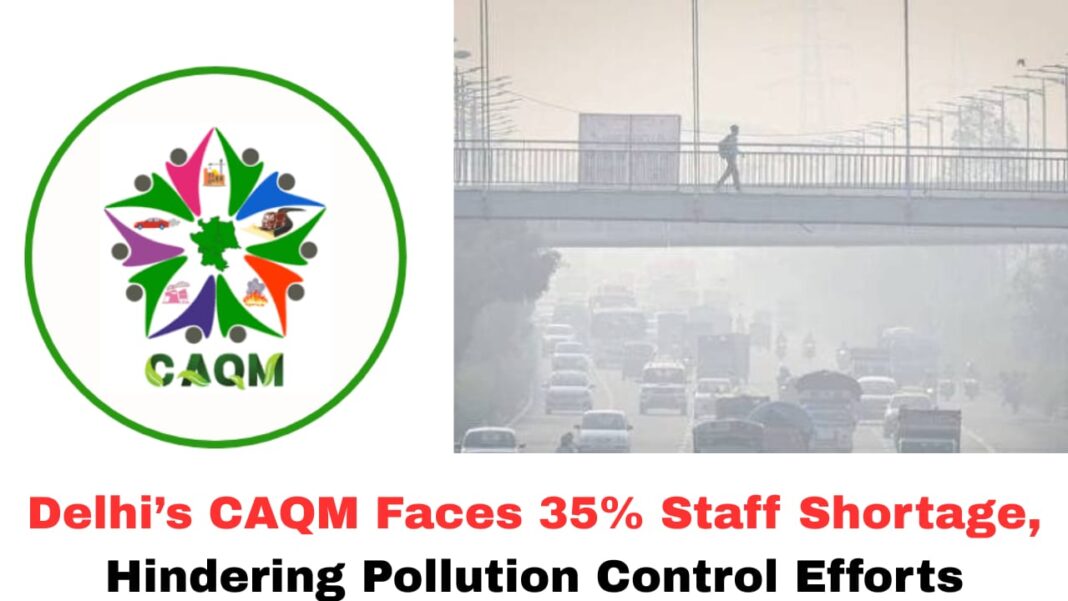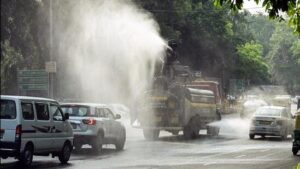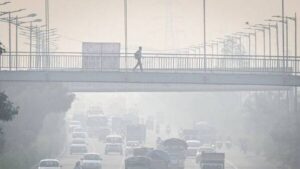Digital News Guru New Deslhi Desk:
Staff Shortages at CAQM Hampering Pollution Control in Delhi
New Delhi — A Right to Information (RTI) request has revealed that the Commission for Air Quality Management (CAQM), the central body tasked with overseeing air quality in the National Capital Region (NCR) and adjoining areas, is operating with a 35% shortfall in its sanctioned permanent staff strength. The revelation has raised serious concerns about whether CAQM has the capacity to enforce pollution control measures effectively.
What the Numbers Show
- The CAQM is authorised for 56 permanent (regular) posts, but only 38 of those are currently occupied, leaving 20 permanent posts vacant. In effect, about one in three permanent positions remain unfilled.

- Alongside the permanent staff, there are 38 contractual employees working with CAQM, which helps fill gaps but does not make up for the missing permanent capacity.
- Recruitment activity since 2023 has added 26 permanent employees, of which 11 were hired in 2025. In the same period, 4 employees retired. So while some progress has been made, attrition is also a factor in the shortfall.
Why This Matters: Impacts on Pollution Control Efforts
The gaps in staffing are not just administrative—they are substantially affecting the ability of CAQM to execute its mandate. Some of the key impacts include:
- Enforcement Weakness
CAQM’s ability to issue, monitor and enforce orders under the Graded Response Action Plan (GRAP) and other pollution control regimes depends heavily on adequate manpower. Vacancies reduce field inspections, delay response times, and limit follow-ups on violations. - Regulatory Oversight Reduced
Monitoring of air pollution sources—vehicular emissions, industrial emissions, stubble burning, construction dust—requires not just legal/regulatory powers but sufficient personnel to carry out sampling, analysis, public complaints investigation, etc. Fewer staff mean fewer checks and possibly less deterrence for polluters. - Decision & Strategy Delays
Policy formulation, inter-agency coordination (with State Pollution Control Boards, etc.), data collection and analysis all slow down when key positions are unfilled. This is especially important for seasonal pollution surges (e.g., in winter) or cross-border pollution (e.g. from neighbouring states) that require nimble response. - Public Accountability & Trust Erosion
Citizens expect that the pollution control machinery is proactive and effective. News of 35% vacancies undermines public confidence—if the staff side is weak, enforcement and results tend to lag. It also gives critics ammunition to argue that CAQM is under-resourced or under-prioritised.
Recent Judicial & Regulatory Attention
The Supreme Court has taken note of CAQM’s performance in view of its staffing issues:
- In August 2024, the Supreme Court referred to the inefficiency of the Pollution Control Boards of Delhi and NCR states due in part to vacant posts and asked CAQM to explain how it plans to address pollution, especially stubble burning.
- The court has also directed state governments to fill vacancies in the pollution control boards, suggesting that the problem is not just within CAQM but pervades across regional bodies too.
What Needs to Be Done: Recommendations
To make CAQM stronger and more effective, several steps should be considered:
- Accelerated Recruitment Drive
Prioritise filling the vacant permanent posts—especially at key levels (field inspections, enforcement, policy units). Set clear deadlines, perhaps in coordination with the judiciary, to ensure compliance. - Strengthen Contract Positions with Permanent Pathways
Where contractual staff perform well, consider upgrading their roles or regularising them to ensure retention, motivation, and stability. - Improve Resource Allocation & Infrastructure Support
Besides people, CAQM needs logistical support—monitoring equipment, mobile enforcement units, data collection tools—all of which work better with sufficient human resources. - Better Inter-Agency Coordination
CAQM works in tandem with State Pollution Control Boards, municipal bodies, transport departments, environment ministries. Ensuring those partner agencies also have capacity is crucial. - Transparency & Accountability Mechanisms
Publishing dashboards with staff vacancies, enforcement actions, response times, and monitoring data can help public pressure and policy urgency. - Judicial/Regulatory Oversight
Continued oversight by courts or tribunals (like NGT) can ensure recruitment timelines are met. Penalties or compliance mandates may help.
Broader Implications
The staff shortage at CAQM is not an isolated administrative issue; it plays into larger environmental, health, and governance narratives in Delhi and NCR:
- Delhi has long been among the most polluted capitals globally, with air pollution causing serious public health burdens (respiratory illnesses, cardiovascular diseases, early mortality). If the regulatory body meant to monitor and enforce mitigation measures is under-staffed, effective protection is compromised.
- Seasonal spikes—especially winter months when weather, crop burning in neighbouring states, vehicular emissions combine—demand quick, robust action. Weak enforcement leads to worsening air quality, smog events, and heightened public concern.
- People living in vulnerable zones—children, the elderly, those with respiratory illnesses—bear the brunt. Delays or gaps in enforcement directly hurt them.
Conclusion
CAQM’s mandate is critical: formulating policies, enforcing regulation, coordinating with states, and ensuring air quality is maintained to protect public health. However, the revelation that roughly 35% of permanent posts are vacant underscores a serious capacity gap.
Unless these vacancies are addressed promptly, it is likely that CAQM will continue struggling with enforcement, oversight, and strategy implementation, especially during periods of high pollution. Given the severe health, economic, and social costs of air pollution in Delhi-NCR, addressing staffing shortfalls is not optional—it is essential.
You May Also Read: India Declare at 518/5 vs West Indies: Jaiswal 175, Gill 129*










